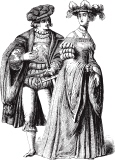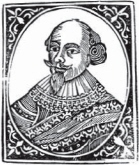Weird But True (11 page)

I
n the early morning of March 18, 1990, two men dressed in police uniforms broke into the Isabella Stewart Gardner Museum in Boston, stealing thirteen works of art, including paintings and drawings by Vermeer, Rembrandt, Degas, and Manet. It was the largest art theft in history. More than twenty years later, the works have not been recovered and are valued today at around $500 million. In the museum, the frames of the stolen artwork remain in their places on the gallery walls as placeholders, empty and waiting for the return of the treasures.
* * *
According to the Art Loss Register, Pablo Picasso is the artist whose work is stolen most frequently. Hundreds of Picassos have been stolen from museums, galleries, businesses, and private homes, including a theft in 2007 from the home of Picasso's granddaughter.

I
n 1990 Vincent van Gogh's
Portrait of
Doctor Gachet
set an all-time record for the highest auction price paid for a painting when it sold for $82.5 million at Christie's in New York. The van Gogh painting held that record for fourteen years, until Pablo Picasso's
Boy with a Pipe
sold at auction for $104.1 million in 2004.
* * *
Although scholars continue to hunt for documentation to the contrary, van Gogh appears to have sold only one painting during his lifetime. That was a piece called
Red Vineyard
, which sold in 1890 during an exhibition in Brussels.
V
an Gogh's
Portrait of Doctor Gachet
was bought at auction by Ryoei Saito, the head of a Japanese paper manufacturing company. Two days later, he paid more than $78 million for a painting by Renoir. Then he hid them both away in a warehouseâand declared that he loved the paintings so much he wanted them cremated along with him upon his death.
He later said he'd been kidding about the last part, but some people aren't so sure.
Saito soon ran into serious money troubles, followed by a conviction for trying to bribe a government official. He died in 1996.
And the paintings? Well, the Renoir was sold to help pay off Saito's debts. The van Gogh has vanished. Museum curators hope that the painting will surface againâand pray it didn't go up in smoke!
I
nstead of painting in long brushstrokes, French painter Georges Seurat painted with tiny dots of color, applying them one by one over an entire canvas. His most famous work is
A Sunday
on La Grande Jatte
. It measures nearly seven feet high and more than ten feet across. From a few feet away, it's easy to distinguish the Sunday afternoon scene of people relaxing by the waterside, but up close the painting looks merely like random dots of paintâabout 3.5 million dots of paint by some estimates.
* * *
It took Seurat about two years to complete
A Sunday
on La Grande Jatte
.
M
odern military camouflage was developed in France during World War I, initially to disguise vehiclesâeven battleships. The people who designed and executed the painting were fine artists in civilian life, and the seemingly random patterns of color blocks that comprised camouflage patterns were strongly influenced by the cubist paintings of artists such as Picasso.
* * *
American artist Grant Wood worked as a camouflage artistâa “camoufleur”âduring World War I. Wood's most famous painting is the decidedly un-cubist, starkly realistic American Gothic.
T
he Central American nation of Costa Rica has not had a standing army or navy since 1948.
Oscar Arias Sánchez, president of Costa Rica from 1986 to 1990 and again from 2006 to 2010, won the Nobel Peace Prize in 1987 for his work to draft the Esquipulas peace accords that helped prevent or end wars in El Salvador, Guatemala, Honduras, Nicaragua, and Panama.
A
lthough he was nominated five times, the world's most famous pacifist, Mohandas K. Gandhi, never won the Nobel Peace Prize.
I
n the center of the current flag of India is a twenty-four-spoke wheel that symbolizes forward progress. Originally, the wheel was a spinning wheel in honor of Gandhi's campaign to encourage people to make their own hand-spun, handwoven khadi fabric for their clothing. He viewed khadi as a symbol of self-sufficiency and unity for the Indian people.
* * *
The flag code of India states that all official flags must be made from hand-spun, handwoven fabric.
Seeing Red
 (and White and Blue)

R
ed is the color seen most often on national flags. About 75 percent of the world's flags have red on them; about 70 percent have white.
* * *
At least twenty nations have flags of red, white, and blue (and only red, white, and blue). Among them: Australia, Cambodia, Chile, Cuba, France, Iceland, Laos, The Netherlands, North Korea, Norway, Panama, Russia, Taiwan, and the United Kingdom.
T
he study of flags is called “vexillology.” This word comes from the Latin for “curtain.”
T
heater curtains that conceal the stage from the audience before the start of a performance, between acts, or at the end of a performance are a relatively new invention in theater terms. They didn't come along until after 1660. The ancient Greeks, who virtually invented theater, didn't have them. Neither did Shakespeareâhis plays were usually performed in open-air venues where the stage was slightly sheltered but the audience was exposed to the sun and the rain.

A
lthough he didn't have a theater curtain, Shakespeare did have the Curtain Theatre. Built in 1577 in an area known as Curtain Close, the Curtain Theatre is considered to be the second purpose-built theater in the London area. (The first was imaginatively named The Theatre.) It's likely that Shakespeare's
Romeo and Juliet
and
Henry V
had their debuts at the Curtain Theatre in the 1590s.

D
uring Shakespeare's lifetime, boys or young men played all of the female roles in his playsâeven romantic roles like Juliet. Most theatrical companies had only two or three boys in the troupe, which is why some scholars believe Shakespeare's plays have a lot more male roles than female roles in them.
* * *
The first woman to play a Shakespearean role on the public stage in England was Margaret Hughes, who played Desdemona in a 1660 performance of
Othello
.
T
heaters in France and Italy permitted women to work as stage actresses and performers in the sixteenth and seventeenth centuries, and those theatrical troupes performed in England as well. So English audiences did see women onstageâjust not English women, who were banned by law from acting on the public stage.
A
hand-painted curtain that conceals the stage or that serves as a backdrop during a performance is not unusualâunless that curtain is painted by Pablo Picasso.
Sergei Diaghilev, founder of the Ballets Russes, managed to have some of the most renowned and unconventional artists of the early twentieth century design for his productions: among them, Henri Matisse, Juan Gris, and Joan Miró, as well as Picasso. They designed stage curtains, backdrops, and even costumes.
Matisse worked with Diaghilev only onceâ they didn't get alongâbut Picasso designed for at least six Ballets Russes productions. The first was the 1917 circus-themed ballet Parade, during which he met and married Olga Khokhlova, one of the ballerinas in the company.
P
erhaps the most famous ballerina to emerge from Diaghilev's Ballets Russes was Anna Pavlova. In the 1920s, Pavlova epitomized the ideal ballerinaâlight and ethereal, just like a swanâand just like the dessert named in her honor.
The Pavlova is made up of a meringue shell filled with tart, soft fruit, especially passion fruit, and sometimes topped with whipped cream. It's a simple dish with a complicated pedigree.
Anna Pavlova toured Australia and New Zealand in 1926. Her visit was such a great event that chefs in both countries claimed to have created the frothy, white dish inspired by her performance of the dying swan from the ballet
Swan Lake
. To keep both sides happy, it's often conceded that the dessert was developed in New Zealand, but was ultimately named in Australia. Still, that answer hasn't really settled the debate, which continues between the friendly rival nations to this day.

W
inston Churchill is credited with the first use of the phrase “Iron Curtain” to describe the emerging division in Europe between countries that were strongly influenced by the Soviet Union and those that were not. He used it in a speech he gave at Westminster College in Fulton, Missouri, on March 5, 1946.